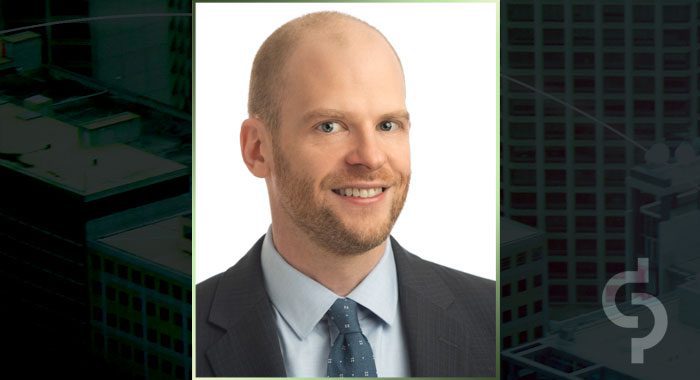Is anyone else tired of the accounting regulations constantly changing? In the past few years, nonprofits have had to deal with an overhaul of revenue recognition rules, “clarifying” (confusing) contributions pronouncements, enhanced disclosure requirements for donations in-kind, and significant new ways to account for operating leases. Of course there were some minor updates as well that had less far-reaching impacts. And now here comes CECL. CECL stands for Current Expected Credit Loss, which is an accounting standard introduced by the Financial Accounting Standards Board (FASB) in the United States. CECL was implemented to provide guidance on how companies should estimate and report credit losses on financial assets. CECL is effective for most entities for years beginning after December 15, 2022, which, for most of you, means calendar 2023 or fiscal 2024.
The main objective of CECL is to require earlier recognition of credit losses, especially impactful for (but not limited to) loans and other financial instruments held by companies. It moves away from the previous standard, known as the incurred loss model, which recognized losses only when they were probable or had already occurred. CECL, on the other hand, requires entities to recognize expected credit losses over the entire life of a financial asset, even if the losses have not yet materialized.
Under the CECL model, companies are expected to consider historical information, current market conditions, and reasonable and supportable forecasts when estimating credit losses. They must also take into account relevant qualitative factors, such as creditworthiness, financial health, and macroeconomic factors that could affect the collectability of the assets.
CECL primarily applies to financial institutions and is not specifically designed for non-profit organizations. However, non-profit organizations that hold financial assets, such as trade receivables, investments, or loans, may be indirectly affected by CECL in a few ways:
INVESTMENTS:
Non-profit organizations often have investment portfolios that may include debt securities, equities, or other financial instruments. If these investments are subject to CECL reporting requirements, the organizations may see changes in the valuation, impairment assessment, and reporting practices for those assets.
LOAN PROGRAMS:
Non-profit organizations that provide loans or engage in lending activities may need to consider the principles of CECL when estimating credit losses on their loan portfolios. Many low-and-moderate income housing organizations will feel some pain in this area. They will be required to adopt a forward-looking approach and consider relevant information to estimate expected credit losses on their loans, similar to financial institutions.
GRANT AND TRADE RECEIVABLES:
Non-profit organizations receiving grants, program fees, dues, or other forms of funding may need to evaluate the potential credit risk associated with those receivables. While CECL’s provisions may appear to not directly apply to these receivables, organizations should still incorporate forward-looking assessment techniques and credit risk management practices, similar to the principles outlined in CECL, to estimate any potential future losses.
DISCLOSURE REQUIREMENTS:
While non-profit organizations may not be subject to the same reporting requirements as financial institutions under CECL, they may need to provide additional disclosures about credit risk management, expected credit losses, and other relevant information if they hold financial assets that fall within the scope of CECL.
Practically speaking, CECL will require non-profit organizations to spend more time analyzing and considering the potential for future uncollectable values in its various categories of receivables. Virtually all organizations are owed at least something at different points in time, be it from donors, grantors, government agencies, members, program participants, parents, or others. Whereas in the past bad debts could be recognized when they became apparent, now non-profit organizations will have to invest time in reviewing past write-offs, past bad debts, credit worthiness, etc. to calculate a reasonable and fair estimate for future bad debts. A common approach is to review aging categories, or how “old” receivables may be. These aging categories can be ascribed certain reserve percentages based on delinquency and past experience, knowledge of who owes the organization money, etc. Those values would aggregate into the organization’s allowance or reserve for bad debts.
Auditors will be reviewing this closely as CECL is implemented, as accounting estimates by their very nature are considered “risky” from an audit perspective. Organizations have motivations to keep reserves understated, as doing so keeps asset values higher and expenses lower, both of which improve overall financial conditions and operations.
Non-profit organizations should consult with accounting professionals or seek guidance from industry experts to understand how the principles and concepts introduced by CECL may affect their financial reporting practices and ensure compliance with applicable accounting standards. CECL may be daunting, but with proper attention and effort, you can be prepared for this new standard and its impacts on your organization’s financial statements. As always, we’re here to help in any way necessary.

THIS ARTICLE WAS ALSO FEATURED IN NFP ADVISOR VOL. 28. READ THE ARTICLE AND MUCH MORE RELATED CONTENT HERE!

Matthew Burke, CPA, CFE
Partner
Matt specializes in providing Cerini and Associates’ diverse array of midsized business clientele and nonprofit organizations with valuable consulting and assurance services. He prides himself on value-added, responsive, and innovative service to his clients; with a focus on forward-thinking and creative solutions. Matt joined the firm in 2002 and has years of experience with many types of complex accounting, auditing, compliance, and general business matters that impact entrepreneurial, established, and nonprofit businesses.




No comment yet, add your voice below!